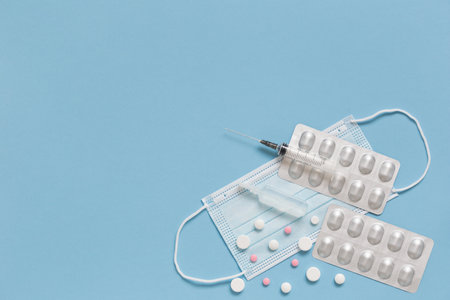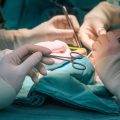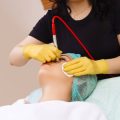Introduction to Red Vein Removal in the UK
Red veins, often referred to as thread veins or spider veins, are a common cosmetic concern across Britain. These small, visible blood vessels can appear on the face and legs, frequently causing distress for those affected. While medically harmless in most cases, their appearance can significantly impact self-confidence and social interactions. In the UK, the demand for effective solutions has grown as public awareness and expectations around aesthetic treatments have evolved. With an emphasis on minimally invasive procedures and natural-looking results, British patients increasingly seek professional help to address red vein issues. The societal implications extend beyond vanity; for many individuals, red veins can affect mental wellbeing and social participation. As such, the pursuit of advanced and reliable treatments is not merely about appearance but also about improving quality of life. This article will explore how the latest advances in laser technology are shaping the landscape of red vein removal in Britain.
Understanding Laser Technology for Vein Treatment
The foundation of red vein removal through laser technology relies on precise science and engineering. In Britain, practitioners commonly use advanced lasers such as Nd:YAG (neodymium-doped yttrium aluminium garnet) and IPL (Intense Pulsed Light) to target unwanted blood vessels beneath the skins surface. Both methods harness the principle of selective photothermolysis, where specific wavelengths of light are absorbed by the haemoglobin in red veins, causing controlled thermal damage that leads to vessel collapse and eventual absorption by the body.
Key Laser Types Used in the UK
| Laser Type | Wavelength | Suitability | Typical Use Cases |
|---|---|---|---|
| Nd:YAG | 1064 nm | Darker skin types, deeper veins | Facial telangiectasia, leg veins |
| IPL | 500–1200 nm (broad spectrum) | Lighter skin types, superficial veins | Spider veins, facial redness |
How Lasers Interact with Blood Vessels
The process begins as the chosen device emits a focused beam of light or pulse. The energy is absorbed preferentially by the red pigment within the blood (oxyhaemoglobin), while surrounding tissues remain largely unaffected. This targeted absorption causes the temperature within the vessel walls to rise rapidly, resulting in coagulation and subsequent sealing of the vessel. Over time, the treated vessel fades as it is naturally reabsorbed by the bodys lymphatic system. Modern British clinics tailor treatment parameters—such as wavelength, pulse duration, and cooling—to match each patients unique vein type and skin tone, ensuring safety and optimal results.
![]()
3. Recent Technological Developments in Laser Devices
The landscape of laser technology for red vein removal in Britain has transformed remarkably over recent years, with British clinics now able to offer patients access to some of the most advanced equipment available globally. Modern laser machines such as Nd:YAG and pulsed dye lasers have evolved to deliver unprecedented levels of precision, targeting problematic blood vessels with minimal impact on surrounding tissues. This increased accuracy not only ensures more effective results but also significantly reduces the risk of skin damage or post-treatment discolouration.
Safety remains a paramount concern, and the latest devices are equipped with robust safety features specifically tailored for the diverse range of British skin types. Innovations like integrated cooling systems and real-time monitoring sensors are now standard, safeguarding patients against excessive heat exposure while maintaining optimal treatment conditions throughout the procedure.
Patient comfort has also seen notable improvements thanks to these technological advances. Many clinics now utilise machines that operate with reduced noise and vibration, contributing to a calmer experience. Enhanced ergonomic handpieces allow clinicians greater control, which translates into shorter treatment times and less discomfort for the patient. Collectively, these developments reflect a dedication within UK clinics to harnessing cutting-edge technology for both superior clinical outcomes and an improved patient journey.
4. Clinical Effectiveness and Safety in UK Practice
When evaluating the latest laser technologies for red vein removal, British clinical practice relies heavily on robust evidence from clinical studies, guidance from the NHS, and insights from leading dermatological experts. The integration of these elements ensures that treatments remain both effective and safe for patients across the UK.
Clinical Studies: Outcomes and Evidence
Recent peer-reviewed research conducted in Britain has demonstrated high efficacy rates for new-generation lasers—such as Nd:YAG and pulsed dye lasers—in treating facial telangiectasia and spider veins. These studies report clearance rates ranging from 70% to 90% after a typical course of treatments, with minimal downtime required. Importantly, adverse events are rare and usually mild, such as transient erythema or slight swelling.
NHS Guidance and Regulatory Oversight
The NHS highlights the necessity of using regulated medical devices operated by trained professionals. Laser clinics in the UK must comply with Care Quality Commission (CQC) standards, ensuring safety protocols are rigorously followed. The NHS also provides clear patient information regarding expected results, risks, and the importance of practitioner expertise.
Key Safety Guidelines for Laser Red Vein Removal
| Safety Aspect | NHS Recommendation | UK Practice Standard |
|---|---|---|
| Device Regulation | CE-marked lasers only | Mandatory CQC compliance |
| Practitioner Training | Qualified medical staff | Dermatologist or nurse-led care |
| Informed Consent | Full risk disclosure | Documented pre-treatment consultation |
| Aftercare Advice | Written instructions provided | 24/7 support line offered by many clinics |
British Dermatological Expertise: Typical Patient Outcomes
Leading UK dermatologists report that most patients experience significant visual improvement after 1–3 sessions, with satisfaction rates above 80%. Complications such as hyperpigmentation or scarring are extremely uncommon when procedures are carried out according to national guidelines. Long-term follow-ups confirm stable outcomes and low recurrence rates for treated vessels.
Summary of Results and Patient Experience in Britain:
- Efficacy: Noticeable reduction in visible veins for the majority of patients within a short treatment course.
- Safety: High safety profile supported by national regulatory frameworks.
- Satisfaction: Consistently positive feedback reflected in British patient surveys and clinic audits.
- Aftercare: Comprehensive post-treatment support ensures optimal recovery and minimal disruption to daily life.
This thorough assessment underscores the importance of evidence-based practice in the UK, combining advanced technology with stringent oversight to deliver safe, effective results for individuals seeking red vein removal.
5. Patient Experience and Access in Britain
When considering the latest advances in laser technology for red vein removal, the patient experience across Britain is shaped by a range of factors including accessibility, expectations, aftercare, and regional availability. The NHS does not typically cover cosmetic treatments such as red vein removal, which means that most patients must seek private clinics. Accessibility varies significantly between urban centres like London, Manchester, and Edinburgh—where specialist dermatology and aesthetic clinics are plentiful—and rural or remote regions where options may be limited.
Accessibility Across Regions
In larger cities, patients often benefit from shorter waiting times, more advanced technologies, and highly experienced practitioners. Conversely, those living in smaller towns or the countryside may have to travel considerable distances to access reputable clinics offering the latest laser systems. Some clinics now offer teleconsultations to help bridge this gap, but actual treatment still requires in-person attendance.
Managing Patient Expectations
The British public is generally well-informed about the capabilities and limitations of laser treatments thanks to widespread information from the NHS, patient advocacy groups, and clinic websites. Most patients expect a visible reduction in red veins rather than complete eradication after one session. Clinics routinely conduct thorough consultations to set realistic expectations based on skin type, vessel size, and medical history.
Aftercare Considerations
Aftercare advice is a critical component of the patient journey. British clinics typically provide written guidance on sun avoidance, skincare routines, and signs of complications such as blistering or pigmentation changes. Follow-up appointments are commonly scheduled to monitor progress and address any concerns swiftly.
Real-Life Case Studies
For example, in the North West of England, a 54-year-old patient reported significant improvement in facial thread veins after two sessions with a new-generation Nd:YAG laser, noting minimal discomfort and only slight redness that resolved within 24 hours. In contrast, a case from rural Wales highlighted the challenge of travel but praised a local clinic’s adoption of portable IPL technology for effective results with flexible scheduling.
Summary
Overall, while Britain’s access to cutting-edge laser treatments for red vein removal is expanding, patient experiences still vary by region. Continued investment in practitioner training and technological upgrades—alongside efforts to improve rural access—will be key to ensuring equitable outcomes nationwide.
6. Regulatory and Professional Guidelines
In the UK, laser treatments for red vein removal are subject to stringent regulatory oversight to ensure patient safety and uphold high standards of care. The primary regulatory body is the Care Quality Commission (CQC), which is responsible for monitoring, inspecting, and regulating healthcare services across England. Clinics offering laser treatments must be registered with the CQC, adhering to its rigorous requirements concerning premises, equipment maintenance, infection control, and staff training.
Alongside the CQC, practitioners must comply with guidelines set by professional bodies such as the British Medical Laser Association (BMLA) and the Healthcare Improvement Scotland for clinics operating north of the border. These organisations provide frameworks on safe laser usage, patient consent protocols, and post-treatment care standards. Practitioners are expected to demonstrate evidence of continuous professional development in laser safety and treatment efficacy to maintain their credentials.
Training and Competency Standards
Laser practitioners in Britain must hold recognised qualifications specific to laser therapy and vascular lesion treatment. Comprehensive training programmes—endorsed by professional associations—focus on anatomy, device operation, risk management, and emergency procedures. Moreover, practitioners are encouraged to obtain additional certification from accredited bodies such as the Joint Council for Cosmetic Practitioners (JCCP), which further promotes ethical conduct and patient-centric care within the aesthetics sector.
Equipment Regulation and Safety Compliance
All laser equipment used for red vein removal must meet British Standards (BS EN 60601-2-22) regarding medical electrical safety. Regular servicing by certified engineers is mandated to ensure devices operate within manufacturer specifications. Clinics are also required to implement robust health and safety protocols—such as mandatory use of protective eyewear—to safeguard both patients and staff during procedures.
Patient Protection Measures
In line with UK law, practitioners must provide comprehensive consultations prior to treatment, including full disclosure of risks, benefits, alternative options, and likely outcomes. Informed consent must be clearly documented. Additionally, robust complaints procedures and indemnity insurance policies are a requirement for any reputable provider.
Together, these regulations and professional standards not only foster public trust but also create a framework that encourages ongoing innovation in laser technology while prioritising patient welfare across Britain’s aesthetic clinics.
7. Conclusion and Future Directions
The landscape of red vein removal in Britain has seen substantial transformation owing to the latest advances in laser technology. From enhanced precision with Nd:YAG lasers to the integration of cooling systems and real-time monitoring, British patients are now offered safer, more effective, and less invasive treatment options than ever before. These advancements have shortened recovery times and made treatments accessible to a wider range of skin types—a particularly significant consideration given the diversity across the UK population.
Looking ahead, both patients and clinicians can anticipate further improvements. The push towards personalised laser settings, guided by artificial intelligence and machine learning algorithms, is set to refine results and minimise side effects even further. Portable and more affordable devices may also increase availability outside major urban centres, reducing barriers for rural communities.
Additionally, ongoing clinical studies within the NHS and private sector will continue to validate these technologies for everyday practice, ensuring that safety standards remain rigorous and outcomes stay predictable. As regulation adapts to new innovations, British patients can expect robust oversight alongside cutting-edge care.
In summary, the future for red vein removal in Britain is bright—combining world-leading technological progress with a patient-centric approach grounded in safety, efficacy, and accessibility. For anyone seeking treatment or considering offering these services as a clinician, staying informed about these developments will be key to achieving the best possible outcomes in the years ahead.


